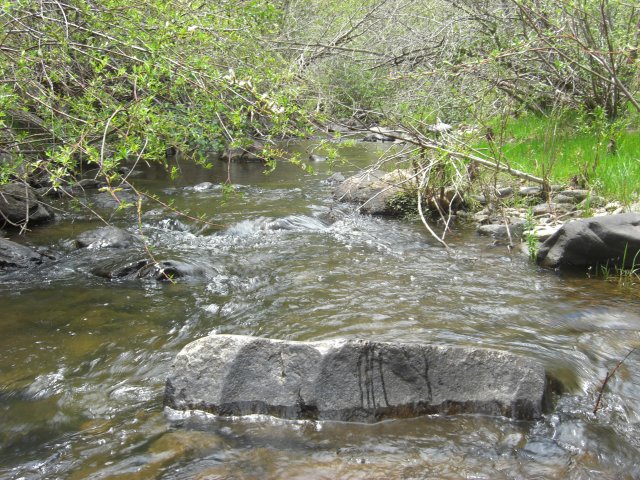Indicators: Shallow Water Habitat/In-stream Fish Habitat
What is shallow water habitat/in-stream fish habitat?
Shallow water habitat, also referred to as in-stream fish habitat, refers to areas that fish and other aquatic organisms need for concealment, breeding and feeding. This can include large woody snags, boulders, rock ledges, undercut banks, overhanging vegetation, brush and tree roots found along stream banks and in the shallow edges of lakes.
Why is it important to evaluate shallow water habitat/in-stream fish habitat?

The most diverse fish and macroinvertebrate communities are found in areas that have complex and varied forms of habitat. Human uses and impacts on streams and lakes, such as channelizing streams, hardening shorelines using bulkheads and artificial shorelines, removing snags and overhanging vegetation, and constructing marinas and piers can simplify or destroy shallow water/in-stream habitat and affect the biological integrity of waters.
What can shallow water habitat/in-stream fish habitat tell us about the condition of water?
Water resources with an abundance of varied types of shallow water habitat are typically able to support healthy and diverse aquatic life populations because they provide more complex ecological habitat spaces. Therefore, this physical habitat indicator also provides important information on the biological health of lakes and streams. Scientists use a habitat complexity measure that sums the amount of shallow water or in-stream fish habitat features within the waterbody and its banks and compare this to expected values at least-disturbed sites, adjusted for factors such as geography and climate.
How is this indicator used in NARS?
The National Rivers and Streams Assessment collects data on instream fish habitat, this data is available on the NARS data page. Below the table you access assessment information in current reports.
| NLA | NRSA | NCCA | NWCA | Indicator Type |
|---|---|---|---|---|
| X | Core Indicator | |||
| Research Indicator |
National Rivers and Streams Assessment Web Report – In-Stream Fish Habitat Results
